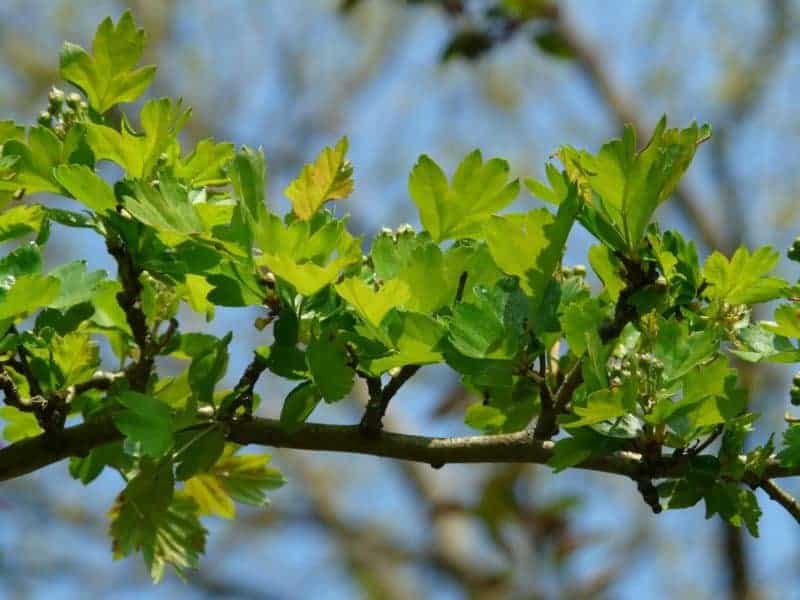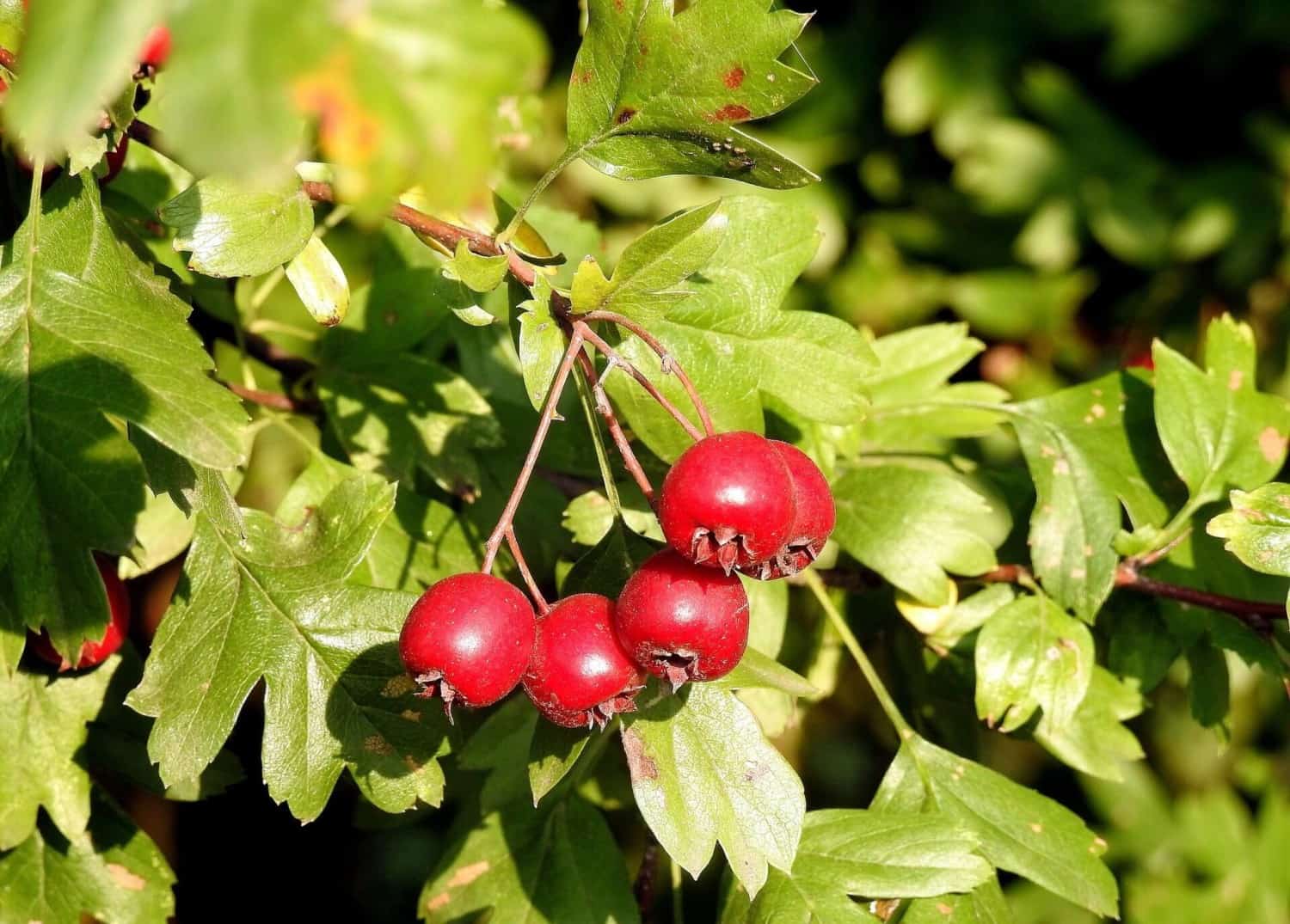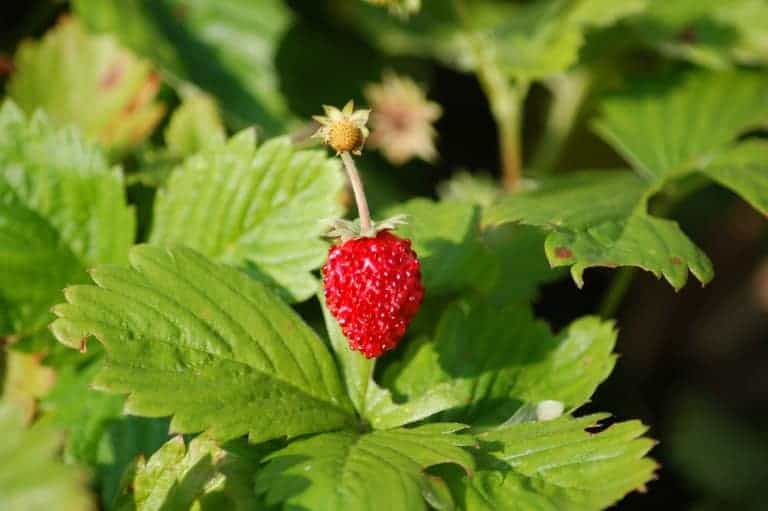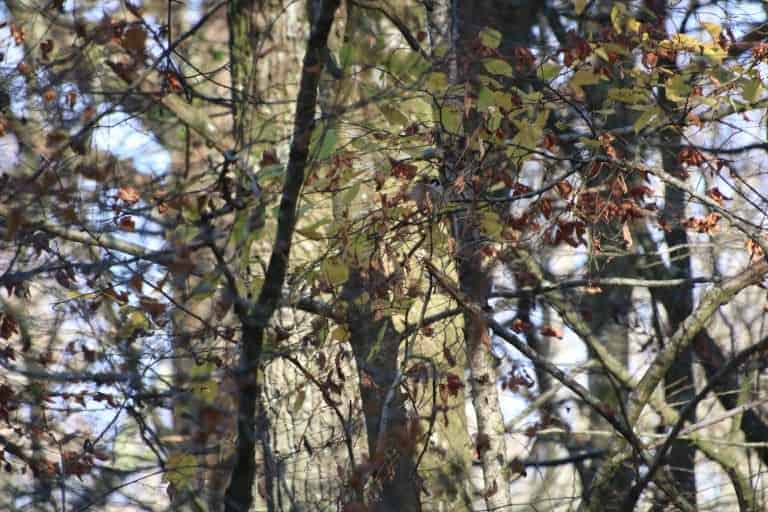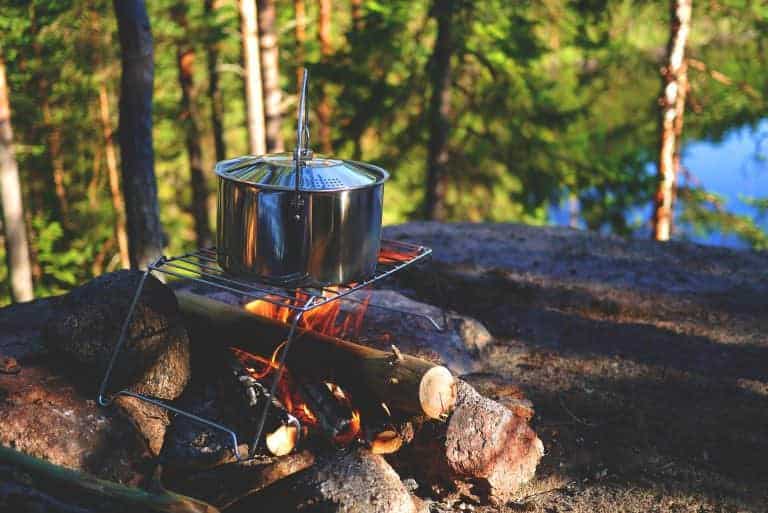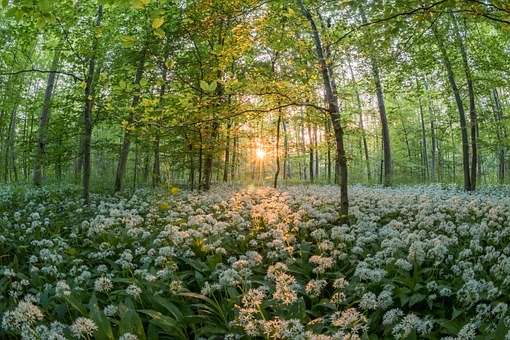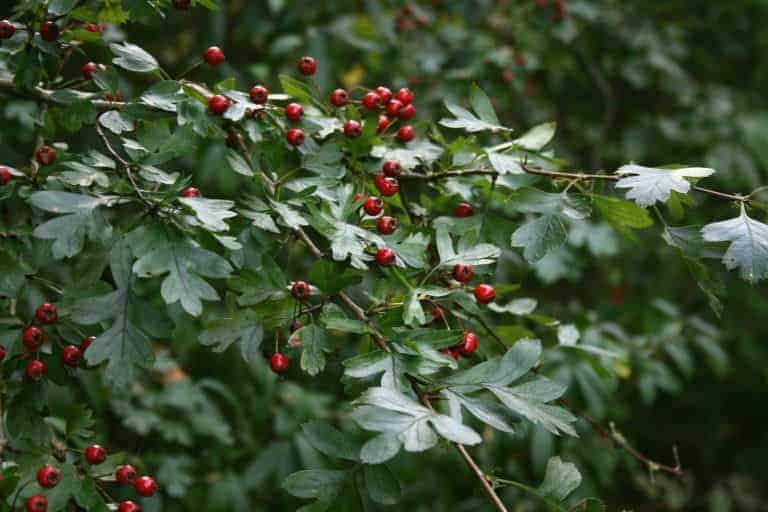Hawthorn
Hawthorn
(Crataegus monogyna & Crataegus laevigata)
From the Rosaceae family, the native Hawthorn can be found in hedgerows, woodland and scrubland across the United Kingdom. Growing to 15 metres at maturity this thorny hedgerow tree is easily identifiable.
Hawthorn thrives in most solid conditions, but flowers and fruits best in direct sunlight. Due to its dense structure it is often used for hedging. Its name comes from the Anglo-Saxon word “Hagedorn” which means hedge thorn. As its name suggests, the Hawthorn has thorny protrusions, that add to its dense structure.
Leaves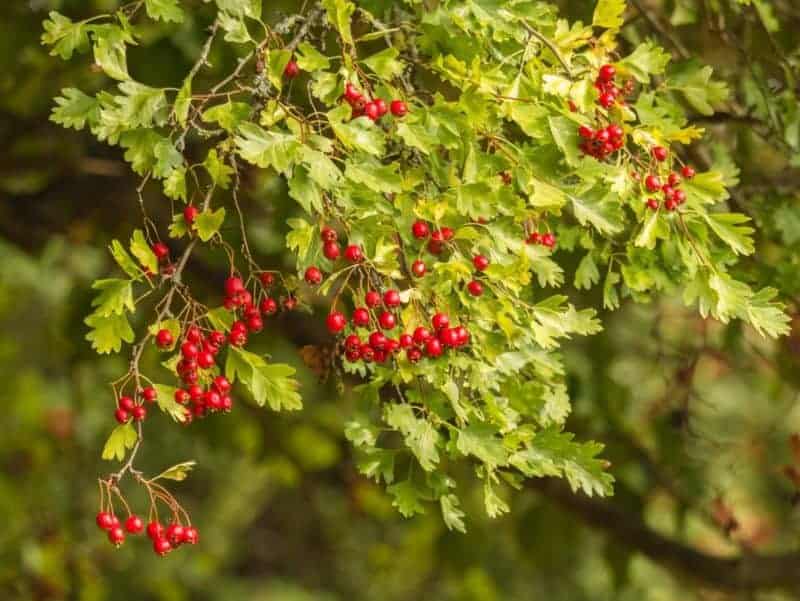
The leaves. Of the Hawthorn are a distinctive shape making them easy to identify. Around 6cm in length the leaves have toothed lobes that cut at least halfway to the middle, or ‘mid-rib.’
Hawthorn are deciduous, with the leaves turning yellow in autumn before falling at the end of the season.
The leaves are edible, but the tender young leaves in spring are the most palatable and packed full of nutrients. They make a great addition to a spring salad.
Flowers
The distinctive explosion of blossom in late spring is a sign of the changing season in to early summer. The multitude of tiny pale pink or white flowers using bloom in early May, hence the traditional connection with May Day celebrations.
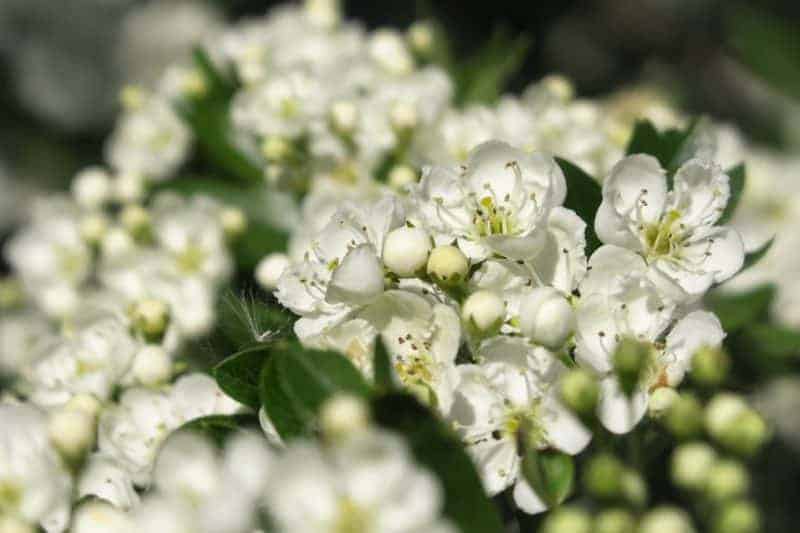 Hawthorn flowers are very small, with five delicate petals and a distinctive fragrance. The flowers are edible and add a floral ingredient to a summer salad. The buds eaten with the tender young leaves are often referred to as nature’s ‘bread and cheese’ by many foragers. The leaves representing the bread, and the buds are the cheese.
Hawthorn flowers are very small, with five delicate petals and a distinctive fragrance. The flowers are edible and add a floral ingredient to a summer salad. The buds eaten with the tender young leaves are often referred to as nature’s ‘bread and cheese’ by many foragers. The leaves representing the bread, and the buds are the cheese.
Though often hybridised, the Common Hawthorn (Crataegus monogyna) and the Midland Hawthorn (Crataegus laevigata) have slightly different identifying features.
The flowers of the Common Hawthorn have a single stigma compared to two on the Midland Hawthorn. This transfers in to the two seeds that the fruit of the Midland Hawthorn has compared to the single seeded fruit of the Common Hawthorn.
It is also found the that the leaves of the Common Hawthorn are not as deeply lobed compared to the leaves of the Midland Hawthorn. Some of these differences are not always obvious, hence the common confusion, even more so when hybridised.
Hawthorns are hermaphrodite, meaning the one tree has both male and female parts. Both male and female parts of the Hawthorn are contained within the same flower. This is incredibly beneficial for the tree when pollinators are attracted in by the intense scent of the flowers, resulting in a high chance of successful pollination.
Fruits
Once pollinated by visiting insects, the pollinated flowers develop in to the tree’s fruit, known as ‘Haws.’
The deep red Haws are edible and work well in jams, jellies and sauces to accompany game. They are best foraged after the first frost, or collected early and stored in a freezer before cooking.
Always remember to forage responsibly as these berries are a great food source for visiting wildlife.
Wildlife
The highly nutritious berries are a valuable food source for small mammals who also make use of the thorny protective coverage to hide away from predators. The dense vegetation also makes great nesting sites for visiting birds who also take full advantage of the berries on offer.
The Common Hawthorn is also a great habitat for many insects and is said to support more than 300 insects of varying species. It is also found to be the main food plant for moth caterpillars including-
Orchid Ermine, Pear Leaf Blister, Rhomboid Tortix, Light Emerald and Lapped Moths just to name a few.
The flowers of the humble Hawthorn are also a great food source for dormice as well as making the most of the protective cover. Bees and other pollinators are drawn to the tree due to the distinctive scent of the blossom to gain the pollen and nectar, as well as helping the tree’s life cycle through pollination.
Mythology & Symbolism
The blossoming of the hawthorn has marked the point that spring turns to summer back through generations. The old saying ‘cast ne’er a clout ere May is out’ is said to refer to the blossoming of the Hawthorn flowers as spring ends and the start of May marks the start of summer.
The Hawthorn is a Pagan symbol of fertility and has long been linked to May Day and its celebrations. Hawthorn is said the be the original source of wood for the May Pole at the heart of the May Day celebrations, while the leaves and flowers were used for the garlands.
Traditionally Hawthorn has not been bought in to the house as it is believed it would bring in illness and bad health. This link to bad health came from the claim that the Hawthorn blossoms smell of the Great Plague.
Botanists have since found that the chemical trimethylamine in the flowers is one of the chemicals found early on in the decaying process of rotting flesh. Hence the gruesome link to bad health and death.
Uses
The finely grained hard wood of the Hawthorn timber is used for turning, engraving and for furniture making. While seasoned Hawthorn makes great firewood and charcoal due to its ability to burn at high temperatures.
The flowers, fruits and young greenery are all edible and can be used in a variety of recipes. Hawthorn flowers can be eaten raw and make great addition to salads. The berries can be cooked in to jams and sauces, or dehydrated to make tasty fruit leathers. And the succulent young leaves make a great addition to salads, soups or stews.
All round this native tree is a treasured member of the British landscape. Not only providing thorny shelter and protection for wildlife but a great food source for a variety of species as well as our own personal gains too. For these great reasons we should nurture this incredible tree for us, the wildlife and future generations too.
